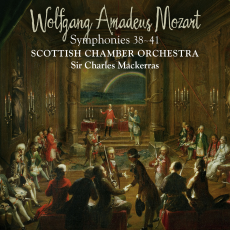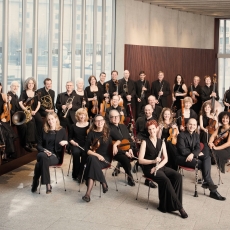Mozart Symphonies - SCO & Sir Charles Mackerras - McAlister Matheson Music
This is not the first time that Sir Charles Mackerras has recorded these Mozart symphonies. His sprightly cycle with the Prague Chamber Orchestra in the mid-eighties was critically well-received, and his 1975 recording of nos. 40 and 41 with the LPO was available fairly recently on EMI's Cfp label. These new recordings with the SCO, however, area on a different plane altogether. A 1798 report from Prague referred to the eponymous symphony as a favourite "played with great élan and fire" - sentiments equally applicable to the SCO's performance of that work. Rasping natural horns and trumpets at the climaxes and crisply articulated quavers from the violins are but a part of the rich tonal tapestry drawn from the orchestra by Mackerras, whose energy never flags - the Presto finale is especially fiery. Symphony no. 39 receives an even better performance. Grace and energy abound in the first movement, while the strings are at the silkiest in the Andante con moto. The Menuetto is remarkable for the strings' unanimity of attack with the bow; but the clarinets star in the Trio, with their serene melody and chortling accompaniment. Delicacy and spice are the hallmarks of the concluding Allegro. Symphony no. 40 can sound prettified and insubstantial in the wrong hands, but not here. Mackerras views it as essentially a tragic work, and this performance is as coherent as I have heard, with the Menuetto's tautness and urgency for once making that movement sound as if it belonged with the rest of the symphony, and the resulting impact of the music being as far from "muzak" as it is possible to imagine. The grandeur and exuberance of the "Jupiter" rounds off a marvellous set. The booklet sports an interesting and very readable essay by Neal Zaslaw on the place of these symphonies within the framework of Mozart's symphonic output. Apparently, at private concerts in Mozart's day, listeners would sometimes sit or stand in the orchestra to observe more closely; Linn Records' microphone placings and digital technologies perhaps reproduce that experience to a certain extent! Sir Charles also contributes a most helpful Note.

